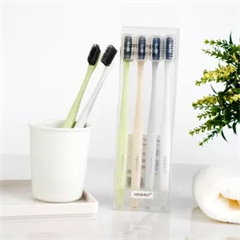Introduction: While the environmental impact of plastic toothbrushes is a growing concern, it’s essential to also consider the hygiene aspect of oral care. In this blog post, we explore the proper care and maintenance of plastic toothbrushes to ensure optimal dental health while being mindful of sustainability.
- Regular Replacement: To maintain good oral hygiene, dentists recommend replacing your plastic toothbrush every three to four months or sooner if the bristles become frayed. Regular replacement ensures the toothbrush remains effective in cleaning your teeth.
- Proper Storage: After each use, rinse your plastic toothbrush thoroughly with water and store it in an upright position to allow it to air dry. Avoid covering the toothbrush, as this can promote the growth of bacteria.
- Disinfection Methods: To disinfect your plastic toothbrush, you can rinse it with an antibacterial mouthwash or immerse it in boiling water for a few seconds. However, be cautious with extreme heat, as it may damage the bristles.
- Individual Toothbrushes: It’s crucial to use separate toothbrushes for each family member to avoid cross-contamination of bacteria. Store toothbrushes separately and avoid touching the bristles of other toothbrushes.
- Responsible Disposal: When it’s time to replace your plastic toothbrush, remove the bristles and recycle them if your local recycling program accepts them. The plastic handle can be disposed of in the general waste, but consider seeking sustainable alternatives for future dental care.
Conclusion: Proper care and hygiene practices for plastic toothbrushes are essential for maintaining oral health. While we address the environmental concerns surrounding plastic toothbrushes, it’s equally important to adopt responsible oral care practices to ensure a healthy smile.



















